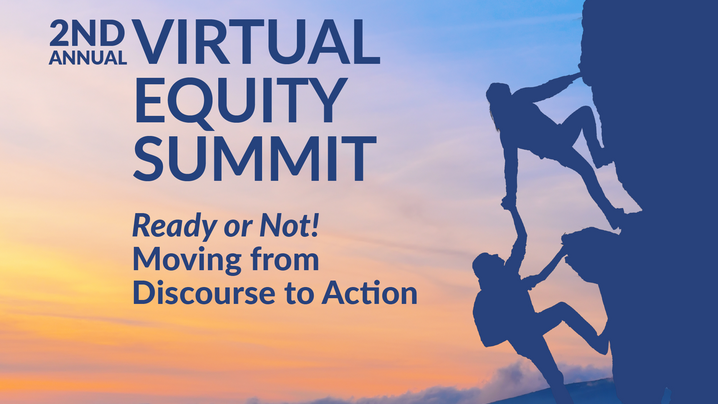
For ICMA’s second annual Equity Summit: Ready or Not! Moving from Discourse to Action, Leon T. Andrews Jr., president and CEO of Equal Measure, delivered a compelling keynote that begged the question; “Two years after George Floyd, how do you sustain commitment to advancing racial equity in local government?” While such brazen acts of racism that take place on a global stage inspire change and action in that moment, there is no denying that keeping that momentum can be difficult. Andrews addresses this and just how to keep the fire burning within your organization by normalizing, operationalizing, and organizing equity efforts.
Normalize
The natural first step is to normalize racial equity in your organization, fostering the urgency of equity and making it a priority. One way to foster that urgency is by pointing out racial disparities and how those disparities can negatively impact those in the community you serve. Everything from infant mortality to life expectancy and everything in between can be predicted by race. Bridging these disparities requires the closing of these proverbial gaps so that race no longer predicts one’s success, which will naturally improve outcomes for all. Targeted strategies must be deployed to zero in on improvements for those who are worse off, moving beyond service delivery and focusing on the root causes like policies, institutions, and systems.
Further normalizing racial equity involves creating a shared analysis and language about racism and equity. This involves clarifying equity-focused terms and examples so that everyone is on the same page for future discussions surrounding equity. Some terms and examples that are important to clarify are equality and equity; equality meaning to provide everyone with the same thing, while equity is to provide based on needs. Another term helpful to clarify is bias, both implicit (unconscious or unintentional) and explicit (conscious or intentional), and how to acknowledge and take action to mitigate bias. Arguably, the most important terms to familiarize yourself and organization with are the different forms of racism and how those contribute to the racial disparities we see today. Individual racism (bias or discrimination by a single individual), institutional racism (policies and procedures that work better for white people), and structural racism (combining all institutions, making a system that negatively impacts POC) collectively contribute to the disparities that local government leaders have both a moral and economic obligation to dismantle for the betterment of the communities they serve.
Operationalize
Once the need for racial equity is identified and normalized, the next step is to operationalize. This involves taking action through the use of racial equity tools and gathering/analyzing data to identify the strategies that will yield better outcomes for POC to reduce racial inequities. Racial equity tools are essential to this process because they actively insert racial equity into every step of the decision-making process.
Racial equity tools equally act as both a product and a process. Once a racial equity tool (the “product”) like a budget equity tool has been implemented, the process surrounding the use of that tool entails analyzing the data that you gathered with the help of that tool, developing strategies for racial equity based on your analysis, implementing the plan derived from your strategies, being communicative and holding yourself and others accountable throughout the process, and yielding your desired results. It is important to note that the process does not stop there. It is meant to continue so that the desired outcomes persist, and equity is both achieved and maintained.
Organize
Once operationalized, the final step is organizing for racial equity. This involves developing a capacity for racial equity across all departments and resourcing the work through partnership, training, intentional structure, and process. Intentionality is key here, especially when building teams (core teams, departmental teams, interdepartmental teams, etc.) that will hold your organization accountable for continuing to advance racial equity work and not lose the critical momentum you worked so hard to build. Accountability agreements, departmental work plans, performance reviews, the continued use of racial equity tools, and institution-wide work plans are all great ways to sustain racial equity work in your organization. It also helps to partner with other organizations like Equal Measure in order to get outside feedback, assistance, and support in continuing this essential work.
Furthermore, organizing around different groups is essential to getting the type of response you want. There are four main groups in this work; advocates (supporters), followers (shows up, but not as active), skeptics (has many questions), and resistors (opponents), it is important to tailor your messaging to address each of these groups to either make them stronger supporters, inspire action, address their concerns, or make them less resistant to these initiatives. Overall, it is important to convey that good governance largely depends on racial equity. That achieving racial equity will ultimately result in meeting key community goals in other areas besides equity. This work will promote the health, safety, and overall prosperity of the entire community you serve, which is every local government leader’s number one priority.
So, two years after George Floyd, how can you keep the fire burning for racial equity in your community? You can do so by normalizing racial equity and its importance, operationalizing through action, and organizing to keep your momentum going. This work is everyone’s business, so we encourage you to continue on your journey!
If you need help mapping the next steps of your equity journey, look to ICMA’s equity resource hub.
New, Reduced Membership Dues
A new, reduced dues rate is available for CAOs/ACAOs, along with additional discounts for those in smaller communities, has been implemented. Learn more and be sure to join or renew today!
